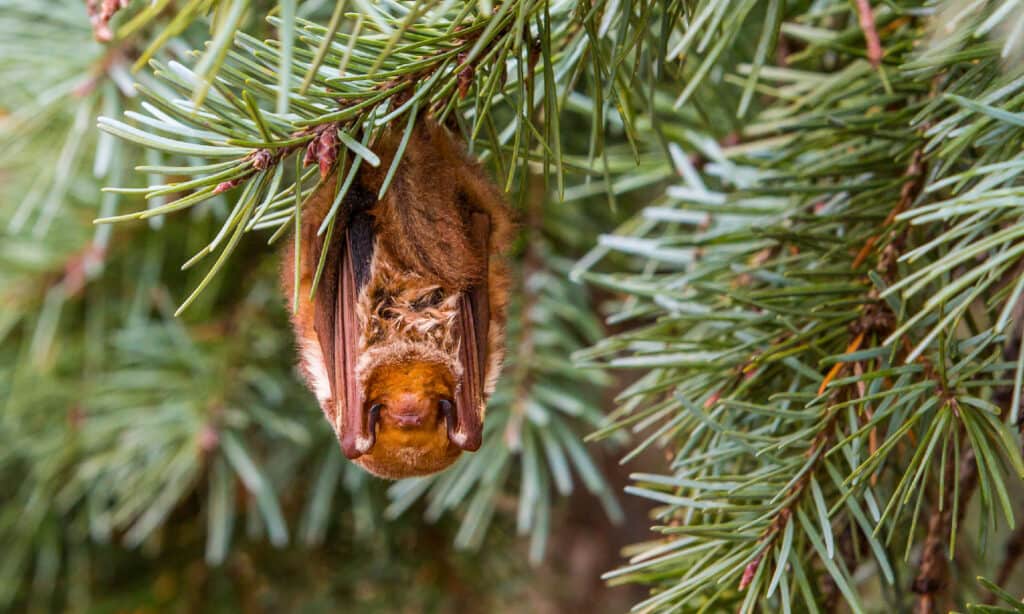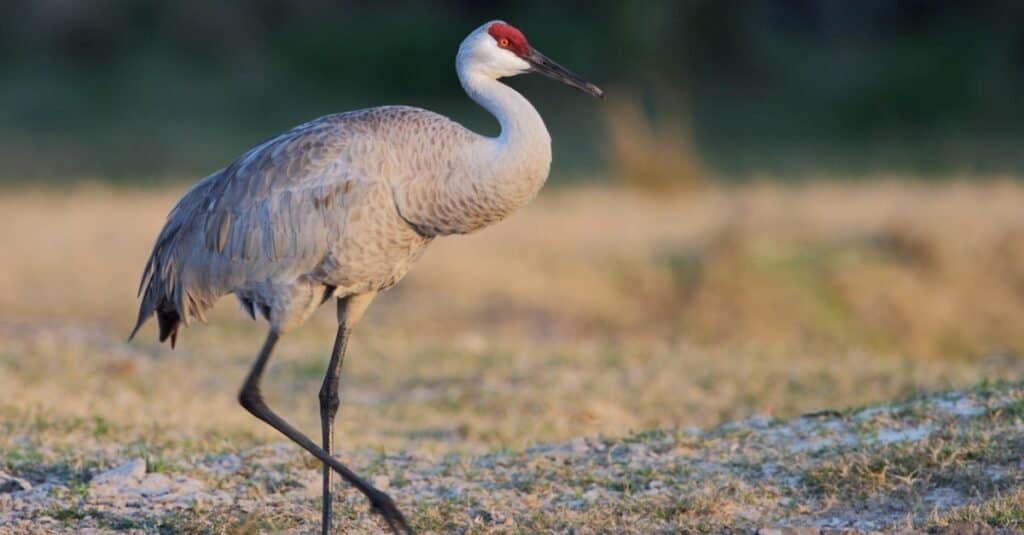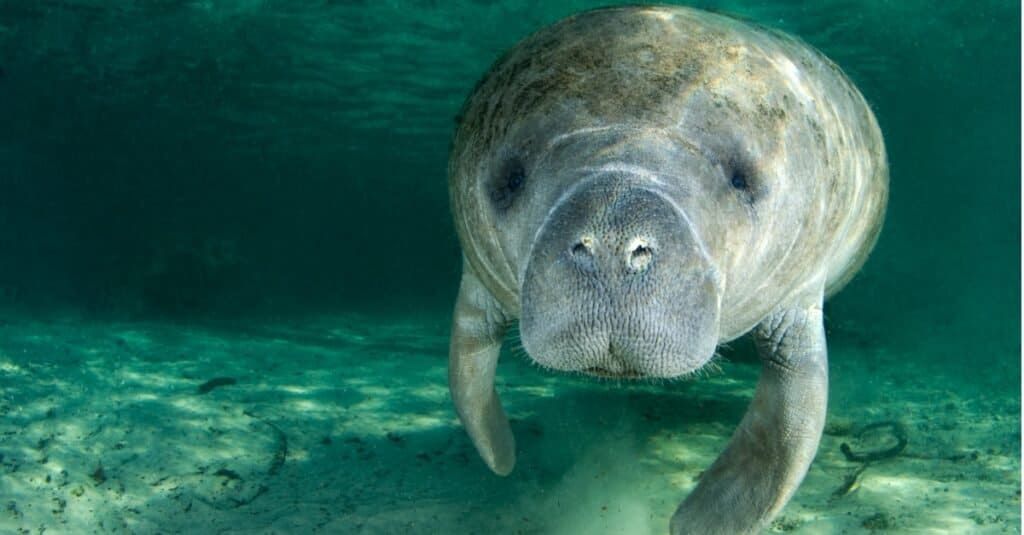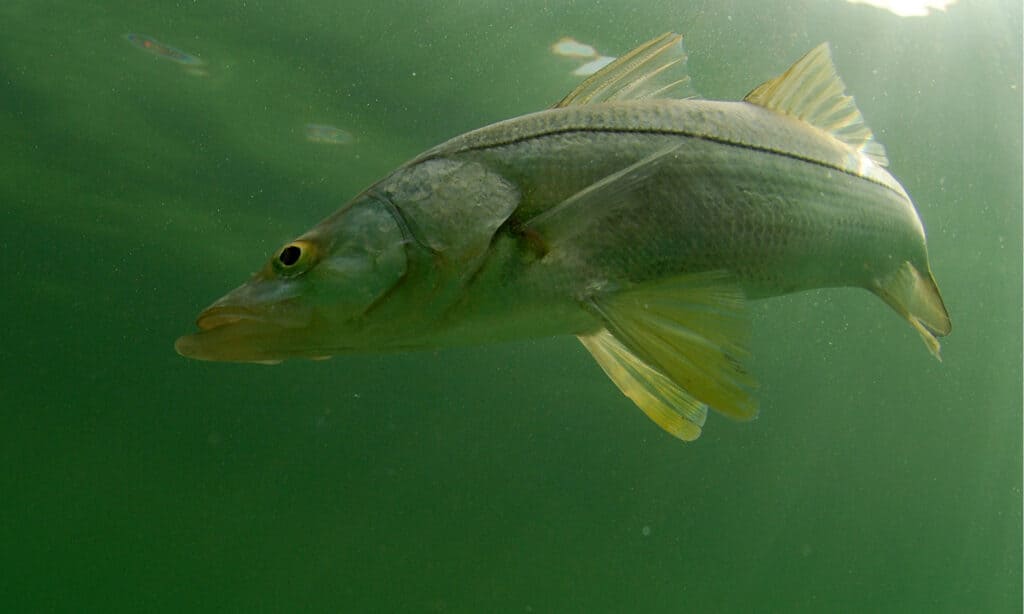The Sunshine State is the preferred winter retreat for many people. After all, the state enjoys temperatures of up to 76 degrees Fahrenheit (24°C) in January. As such, sleeping in shorts and a t-shirt is certainly possible.
However, humans aren’t the only ones looking for sunny shores during the cold months. Certain animal species will also migrate to Florida when winter is coming. Some are common bird species, while others can be called outright amazing.
If that last sentence sparked your curiosity, you should keep reading this article. Here are five amazing animals you can see if you’re visiting Florida this winter!
1. Hoary and Eastern Red Bats

Eastern red bats are widely distributed in the eastern part of North America.
©Elliotte Rusty Harold/Shutterstock.com
| Scientific name | Conservation status | Characteristic feature |
|---|---|---|
| Hoary bat – Lasiurus cinereus | Hoary bat – Least Concern | Hoary bat – dark brown coat with white tips to its hairs; |
| Eastern red bat – Lasiurus borealis | Eastern red bat – Least Concern | Eastern red bat – distinctive brick or rusty red fur in males, frosted red in females; |
Eastern red bats are widely distributed in the eastern part of North America. While the species can be observed in northeastern Mexico and southern Canada in warmer seasons, winters bring the eastern red bat to northeastern Mexico and the southern United States. This species is closely related to the hoary bat, and, as a result, they often migrate together.
The downside of the fact that you might be able to spot some eastern red and hoary bats is the fact that they are highly susceptible to barotrauma. In search of warmer environments, they have to face wind turbines.
For example, 40% of all bats killed by wind turbines in 2005 were hoary bats.
The two species can be spotted in trees and are known for contributing to mosquito population reduction.
2. Sandhill Cranes

Sandhill cranes are known for one of their peculiar habitats.
©iStock.com/WMarissen
| Scientific name | Conservation status | Characteristic feature |
|---|---|---|
| Antigone canadensis | Least Concern | Loud, trumpeting call |
The sandhill crane is a large crane growing up to 4 feet 6 inches (136 cm) tall. Sandhill cranes are known for one of their peculiar habitats. While found in North America, the species is also common in the extreme regions of northeastern Siberia.
Specimens can be identified by their loud and trumpeting calls, which can be heard long before you actually see the bird.
During winter, they fly south and usually end up in Florida. There, sandhill cranes can gather in flocks of over 10,000 specimens, as in other wintering areas they choose. In the Sunshine State, this crane is known to gather in the Paynes Prairie Preserve State Park, namely in its prairies and marshes.
You shouldn’t miss seeing a flock of sandhill cranes if you keep your ears out for the trumpeting call they let out.
3. Manatees

Manatees cannot survive temperatures below 60 °F (15 °C).
©A Cotton Photo/Shutterstock.com
| Scientific name | Conservation status | Characteristic feature |
|---|---|---|
| Trichechus manatus | Vulnerable | Prehensile snout |
The manatee is an aquatic, herbivorous mammal. It is often called “sea cow” due to various reasons. You won’t see one on land, as the species is fully aquatic; however, some might be spotted swimming close to the surface. After all, it’s quite difficult to miss an animal that can grow up to 13 ft 1 in ( 4 m) long and weigh about 1,300 lbs (590 kg).
Manatees cannot survive temperatures below 60 °F (15 °C). This is the main reason why, during winter, you will most likely see them adorning the waters of the Sunshine State. The species is known to migrate to freshwater springs using brackish water estuaries.
Suppose you want to increase your chances of seeing a manatee while in Florida. In that case, you should head to one of the following rivers – Crystal, Chassahowitzka, and Homosassa. The West Indian manatee selects the headsprings of these rivers as they maintain a 72 °F (22 °C) temperature throughout the year. Roughly 600 West Indian manatees can be seen throughout the rivers of Citrus County for almost six months every year, from November to March.
4. Snook

The snook is a marine fish that can grow up to 4.6 feet (140 cm) long.
©FtLaud/Shutterstock.com
| Scientific name | Conservation status | Characteristic feature |
|---|---|---|
| Centropomus undecimalis | Least Concern | Black lateral line |
The snook (often referred to as the common snook, robalo, or sergeant fish) is a marine fish that can grow up to 4.6 feet (140 cm) long. Its distinctive characteristic is a black lateral line that crosses almost its entire body. The heaviest snook ever caught was roughly 54 pounds (24.32 kg).
Juvenile snooks are known to migrate right after the spawning period. They live in brackish waters until they reach maturity. Then, they return to the open ocean to perpetuate the species.
In the Sunshine State, the snook can be found throughout the state during winter. However, if you want to ensure that you’ll see at least one, then Ellie Schiller Homosassa Springs Wildlife State Park is your safest bet. The park features an underwater observatory that allows you to observe both snook and manatees.
5. North Atlantic Right Whale

North Atlantic right whales can be spotted in the eastern parts of Florida and Georgia.
©iStock.com/6381380
| Scientific name | Conservation status | Characteristic feature |
|---|---|---|
| Eubalaena glacialis | Critically Endangered | Absence of dorsal fin; broad back; long arching mouth |
You wouldn’t expect to meet a whale in Florida, right? Well, if you’re a fish and marine life enthusiast, here is some good news. The North Atlantic right whale, with an average length of 43-52 feet (13-16 m) and an average weight of 44-77 short tons (40,000-70,000 kg), does migrate to the Sunshine State.
North Atlantic right whales can be spotted in the eastern parts of Florida and Georgia. This is the only place (discovered so far) where the species gives birth. It is worth mentioning that the North Atlantic right whale is currently marked as threatened or, more specifically, critically endangered. As such, it is one of the rarest sights regarding whales.
Specimens have been spotted from the shores of Ormond Beach (found in North Peninsula State Park).
Up Next:
- 8 Birds That Migrate The Longest
- 10 Most Incredible Migratory Animals
- Discover 10 Florida Insects and Arachnids That Bite or Sting (Ranked by Most Painful!)
The photo featured at the top of this post is © Tomas Kotouc/Shutterstock.com
Sources
- Wikipedia, Available here: https://en.wikipedia.org/wiki/Common_snook
- Wikipedia, Available here: https://en.wikipedia.org/wiki/Sandhill_crane#Status_and_conservation
- Florida State Parks, Available here: https://www.floridastateparks.org/learn/five-migrating-species-watch-winter
Thank you for reading! Have some feedback for us? Contact the AZ Animals editorial team.






